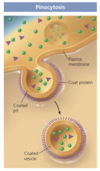Exam 1 Flashcards
(182 cards)
What are the seven properties of life?
- Order
- Regulation
- Growth and development
- Energy processing
- Response to the environment
- Reproduction
- Evolution
What is systems biology?
A model of biological systems that that focuses on the interactions among the system’s parts
Reductionism
An approach to studying complex systems by studying simpler, more manageable components
Eukaryotic cells
Have a double membrane-bound nucleaus that stores the cells DNA
Contain membrane-enclosed organelles
Cytoplasm is in the region between the plasma membrane and nucleus
Generally much larger than prokaryotic cells
Meaning -after the nucleaus
Prokaryotic cells
Lack a nucleus and membrane-enclosed organelles
DNA is concentrated in a non-membrane bound region called the nucleoid
Meaning -before the nucleus
Genomics
The large-scale analysis of the DNA sequence of a species- its genome
Comparatively studies genomes of different species
Hierarchy of life
Atoms < molecules < organelles < cells < tissues < organs < organ systems < organisms < populations < communities < ecosystems < biosphere
Linnaean system
Dear King Philip Came Over From Great Spain
- Domain
- Kingdom
- Phylum
- Class
- Order
- Family
- Genus
- Species
Domains of life
Domain Bacteria
Domain Archaea
Domain Eukarya
Which elements comprise the remaining 4% of essential elements?
Calcium
Phosphorus
Potassium
Sulfur
Emergent properties of water
- Cohesive behavior
- Ability to moderate temperature
- Expansion upon freezing
- Versatility as a solvent
Temperature at which water reaches its greatest density
4º C
What is an isomer?
A compound that has the same number of atoms but a different structure
Different types of isomers
Structural isomer- differ in the arrangement of atoms
Cis-trans isomers (formerly called geometric isomers)- carbons are bonded to the same atoms but differ in their spatial arrangements due to the rigidity of a double bond
Enantiomers- are mirror images that differ in shape due to an asymmetric carbon- one that is attached to four different atoms or groups of atoms
Hydroxyl group
Alcohol
Are polar due to electronegative oxygen
Compound names usually end in -ol

Carbonyl group
Ketone- carbonyl group within a carbon skeleton
Aldehyde- carbonyl group at the end of a carbon skeleton

Carboxyl group
Carboxylic acid or organic acid
Ionized form —COO– (carboxylate ion) is found in cells

Amino group
Amine
Acts as a base
Ionized form —NH3 is found in cells

Sulfhydryl group
Thiol
Two sulfhydryl groups can react to form a disulfide bond- help to stablize proteins

Phosphate group
Organic phosphate
Contributes a 1– charge when inside a chain and a 2– charge when at the end
Confers the ability of a molecule to react with water when attached

Methyl group
Methylated compound
Affects the espression of genes when on DNA or on proteins bound to DNA
Affects the shape and function of male and female sex hormones

Dehydration reaction
Formation of a bond by the removal of a water molecule

Hydrolysis reaction
The breaking of a bond by adding a water molecule

Glycosidic linkage
Covalent bond formed between two monosaccharides by a dehydration reaction




































































































